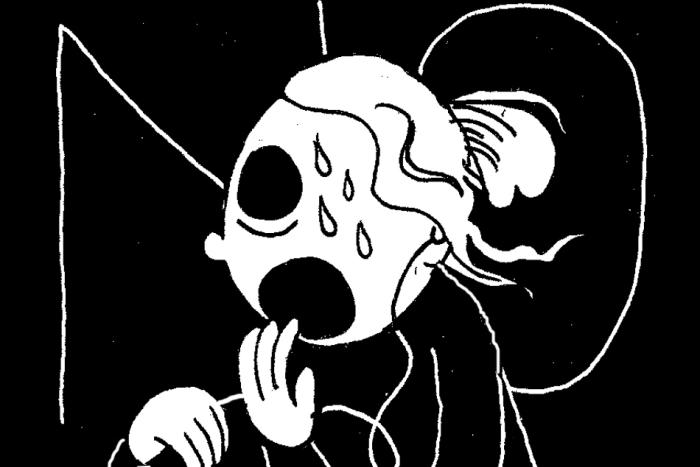On April 10, Warren Kinsella published an open letter to the hactivist collective Anonymous, imploring them to intervene in the Rehtaeh Parsons case. Kinsella, a former advisor for Michael Ignatieff and a vocal proponent of Justin Trudeau’s Liberal Party candidacy, is worlds away from the unnamed, masked operators whom his letter addresses, and he admits to having felt uneasy about the correspondence. (“The Internet is an unpredictable place,” he says over the phone. “You don’t know who you’re dealing with.”) But “the system failed,” he says, naming the Attorney General’s office, the Premier’s office, the police system, and the regional school board. “All the possible avenues for recourse were gone.” Anonymous was a last resort.
It’s unclear whether Anonymous’s decision to intervene was prompted by Kinsella’s online plea. (Kinsella suspects that Anons were working on the case before he spoke out.) Still, the fact that a public figure had called openly on the group attests to its growing stature in Canada. I first took an interest in Anonymous while reporting a feature about a new generation of online crime fighters who are second-guessing, upstaging, and competing with the police—and in the process, exposing flaws within the investigative systems. Anonymous’s OpJustice4Rehteah—which helped to create such a humiliating media flurry that the authorities agreed to reopen the case—is one of the most successful of these initiatives, and it marks a small turning point for hactivism in Canada. Anonymous, with its capriciousness and its wonky theatrics, will never be mainstream, but it is gaining a measure of credibility among people who might previously have written it off. What’s more, the sensitivity and cohesion with which Anons handled the Justice4Rehtaeh operation has called into question many popular assumptions about the movement—my own included.
It’s not hard to understand why people are initially queasy about Anonymous. Their low-fi YouTube videos, with vocal distortion and campy soundtracks, come across as juvenile and menacing at the same time. Their iconography—Guy Fawkes masks, and suited men without heads—can be alienating, in the same way that heavy metal theatrics can seem sinister to those outside the subculture. And Anonymous is unpredictable: it’s a leaderless, non-hierarchical collective; its members are typically strangers to one another; and its motives are diverse and sometimes inscrutable, even to Anons.
But the movement has been gaining a tacit respect. Last February, The Atlantic reported on a school superintendent in Abilene, Texas, who received a communiqué from Anonymous informing him that local students were mercilessly bullying a 12-year-old girl on Twitter. “At first the whole thing seemed sketchy,” he told the magazine, “but we would have never done anything if they hadn’t notified us.” Sure, being contacted by a masked operative was unnerving, but the information itself was helpful.
That sense of bemused gratitude characterizes plenty of encounters between citizens and Anons. Last summer, Roseanne Barr got into a Twitter scuffle with Anonymous trolls (“I’m getting sick of seeing ANONYMOUS overtaken by white male woman loathing louts who stick the word anon on their bullshit pages”). But she was won over by the collective’s highly publicized exposé of rape culture in Steubenville, Ohio, after which she jokingly rechristened herself “rononomous” and posted a Twitter pic of her face superimposed onto the iconic Guy Fawkes mask. Perhaps the most meaningful endorsement came from Glen Canning, Rehtaeh’s father, who on April 15 posted a brief statement on his blog: “I want to say thank you to Anonymous for getting involved in my daughter’s case… I won’t forget this.”
As public attitudes improve, the operations themselves are becoming more effective. The Justice4Rehtaeh intervention displays a level of moral cohesion that few would have predicted. The names of the four boys who allegedly raped Rehtaeh are an open secret among many Anonymous participants, but the collective decided not to release them out of deference to the RCMP. “The original group that found those names did so in a matter of hours,” explained a Halifax-based Anon. “If that’s the case, others can and likely have found them as well.” But Anonymous has managed to keep the boys’ names under wraps despite the fact that, within such a diffuse community, there’s no formal way to enforce this code of silence. “We believe moral imperative has a great deal to do with it. With the onus lying squarely on each individual Anon that has access to the names, larger scale group cooperation becomes possible.”
Jon Blanchard is a technology writer for Canada.com, who’s also active in the Telecomix movement, a collective that has enabled free Internet connectivity in censored regions of Egypt and Syria. (As a middle-aged man, he’s sometimes the subject of friendly jibes from his Anonymous peers. “They refer to me as ‘the old Telecomix fag,’” he says over the phone from Halifax.) Despite the collective’s loose structures, Blanchard explains, individual initiatives often adhere to a kind of moral authority. “We work on the premise that prominent Anons become prominent because they prove themselves to be trustworthy over time,” he says. “Sure, because there’s no crowd control, Anons can go off the deep end and do crazy things. But as more responsible Anons are rising through the ranks, the operations are getting more sophisticated.”
The projects are becoming more socially engaged, too. In its early days, Anons were the petty rascals of the global village, known for disseminating Harry Potter spoilers as well as their occasionally vicious trolling campaigns against seemingly arbitrary targets. In 2008, the collective embarked on a series of coordinated pranks against the Church of Scientology that evolved into an international protest movement and heralded the birth of Anonymous’s activist sensibilities. Today, Anonymous is known for its name-and-shame campaign against the notorious Steubenville rape crew and its attacks on the website operated by the Syrian Ministry of Defense.
As McGill assistant professor Gabriella Coleman points out, remnants of Anonymous’s old prankster sensibility persist. Anons called their 2010 campaign against Australian porn censorship laws Operation Titstorm, and, in December 2012 they claimed to have hacked the computer of Wesboro Baptist Church spokesperson Shirley Phelps-Roper and bombed her desktop with gay porn. Some people find these antics endearing, some find them puerile, but few would deny that the movement’s operations have been consequential.
“It was a righteous op, it really was,” Blanchard says of Justice4Rehtaeh. “It was successful in part because the demands were reasonable. They weren’t asking the authorities to take their warships and sink them in the harbour. They were asking them to do their job.” Anons are now seeking further action from the Nova Scotia government, including a more detailed inquiry into misconduct in the Rehtaeh Parsons case and a public apology from Nova Scotia Justice Minister Ross Landry.
Anonymous is not the “Internet hate machine,” as Fox News once called it, but neither is it the digital equivalent to the flower power generation, as an overzealous Guardian article implied. (It’s worth noting that the collective has its fair share of gun enthusiasts.) The movement will continue to provoke fear and criticism, and to do things that appall even its most fervent supporters; its ideology will remain slippery, and its motives cryptic. But Anonymous has entered our culture’s ethical conversation—and this may be its most successful hack to date. We may not understand it completely, but neither do we fully comprehend the police system or the judiciary.






